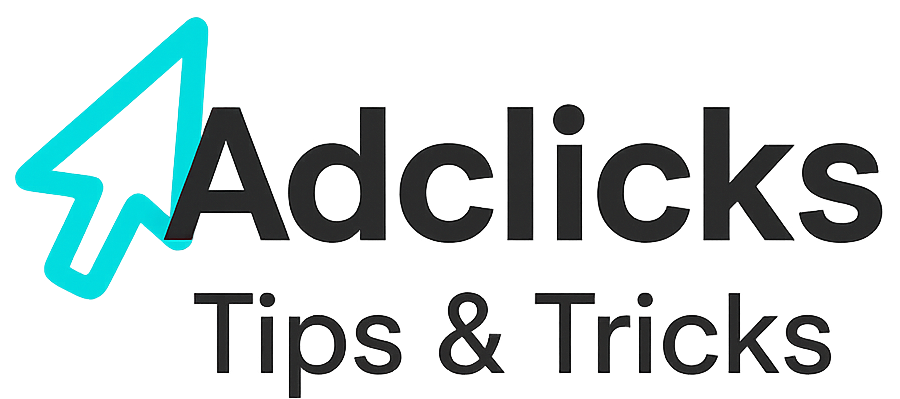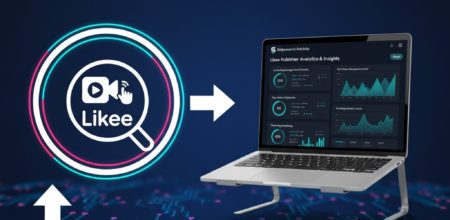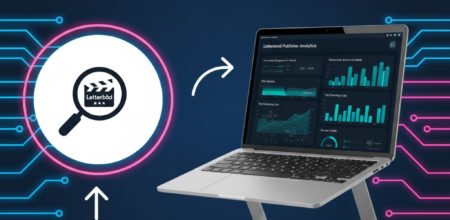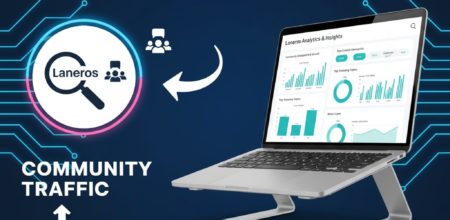Origins and Development
Blind began in Seoul in 2013, founded by Moon Sunguk and Kim Kyum, and quickly carved out a niche in the South Korean professional sphere. Unlike open platforms, Blind required users to verify employment with a work email before granting access. This structure created a culture of verified professionals engaging anonymously, allowing frank discussions on salaries, internal policies, and workplace politics. The concept resonated, and Blind formally launched in Korea in 2014, expanding into the United States by 2015.
The platform’s expansion coincided with rising demand for transparency in the workplace. When Blind entered the U.S., early adoption came from major technology firms, and soon users from Microsoft, Amazon, Meta, Google, and Apple were trading candid stories and salary data. The design of anonymous but verified discourse quickly distinguished it from LinkedIn’s polished branding and Reddit’s unfiltered chatter. Blind’s team framed itself as offering something in between: honesty without personal exposure. For publishers, this history matters — it explains why the community is skeptical of hollow promotions but highly responsive to factual resources.
Publishers can connect this pattern to real-world outcomes. Adclicks often performs well with high-intent readers, and Blind’s origins guarantee intent-driven traffic. Where most platforms struggle to hold users beyond surface chatter, Blind’s verified anonymity creates a habit of searching for hard information. This sets the tone for how a publisher integrates, treating each thread as an evidence-driven request for answers.
Traffic, Reach, and Geography
Today Blind records nearly 10 million monthly visits on web alone, with app adoption pushing its reach further. The vast majority of web traffic comes from South Korea, holding more than 70–80% of share, with the United States providing about 12–15%. Smaller contributions flow from Germany, India, Canada, and the UK. For publishers, this means the audience is not just global but clustered in specific professional regions. Korean users dominate mobile usage, while U.S. users often access both web and app during work hours.
Audience engagement runs deep: 4–5 pages per visit and multiple minutes spent in conversation. Unlike algorithm-heavy feeds elsewhere, Blind threads remain searchable and evergreen, feeding traffic from organic queries. This explains why so many referrals to external pages show intent alignment — users often search for employer or role-specific information, land on a Blind thread, and then click outward. For publishers, matching this search-driven dynamic is essential.
Understanding traffic geography informs monetization. Korean-origin traffic is valuable but monetizes differently from U.S. sessions, where CPC and CPM rates are often higher due to advertiser demand. Aligning Adclicks campaigns to geographic segmentation allows publishers to extract stronger returns by tailoring ad mixes. For example, U.S. salary benchmarking content may support higher CPM inventory, while Korean-language explainers deliver stronger volume.
Who the Blind User Really Is
Blind users are employed professionals, typically aged 25–34, with an overrepresentation of men in technology, finance, and consulting. Verification ensures they are indeed employees, creating a database of voices spanning more than 300,000 companies. Their motivations differ from LinkedIn’s: instead of networking or branding, they come to Blind to compare offers, reveal frustrations, or trade survival strategies in corporate systems.
Culturally, Blind is frank. Anonymity frees users to say what they cannot on record. Salary transparency is a major driver, with many using Blind’s own tools to input compensation and benchmark offers. Others join to vent about management, policies, or structural discrimination. For a publisher, this means that content linked into threads must answer pointed questions, not dance around them. A post on “Amazon layoffs in 2025” is not looking for theory; it’s seeking severance data, redeployment policies, and survivor workloads.
For monetization, this type of user is prime. A visitor who arrives via Blind has already demonstrated high purchase or engagement intent, meaning Adclicks placements on the landing page will face less friction. Unlike cold audiences, Blind users pre-qualify themselves by clicking on a thread with their employer or role in mind. This translates to stronger CPC performance on outbound actions, particularly when aligned with calculators, interview prep resources, or training content.
Behavior Patterns and Thread Dynamics
Blind’s heartbeat lies in its threads. Each thread opens with a provocative question, often company-specific: “What is Google paying L5 engineers in 2025?” Within hours, dozens of employees reply with ranges, anecdotes, or supporting evidence. Traffic is front-loaded: the first hour after a thread launches often dictates its reach. Publishers must therefore respond quickly, crafting links that mirror the exact phrasing of the original question to appear as natural extensions.
Unlike LinkedIn, where glossy headlines work, Blind rewards Blind language. The closer your response matches the vocabulary of the question, the more authentic it feels. Visuals and charts perform well if they compress information into an immediately digestible asset. Long paragraphs without substance risk being downvoted or ignored. Adclicks monetization sits behind this engagement: if you can earn a click through immediate utility, the landing page can carry relevant ad units seamlessly, maintaining trust.
Thread rhythms are tied to global corporate calendars. Earnings announcements, layoffs, or promotion cycles often create surges. During those peaks, Blind threads become dominant in organic search results for the employer. This is when CPC and CPM benchmarks spike for publishers, since intent is tightly aligned with monetizable keywords. Timing your content drops around these corporate events can amplify both reach and revenue potential.
Matching Content to Blind’s Culture
The style of communication on Blind demands content that is both practical and transparent. Threads reward specificity: data tables, comparisons, or links to primary filings are valued. Publishers who provide these elements gain credibility and repeat click-throughs. Conversely, vague or promotional answers are quickly derided.
This sets Blind apart from other networks. A user in a Facebook group may tolerate anecdotal advice; a Blind user expects numbers. A Redditor may enjoy speculation; a Blind user wants confirmation. This behavior shift means publisher landing pages must be structured for clarity: headline matches the query, subhead delivers a precise answer, and body text expands with charts or region breakdowns. This layered approach reflects the hierarchy of expectations on Blind.
Adclicks aligns neatly with this. When a user lands on a page with accurate salary bands, Adclicks can surface contextually relevant ads — perhaps training resources or professional tools. Because the page already satisfied the question, users are less likely to bounce, raising effective CPM yield. CPC/CPM metrics become diagnostic: are Blind sessions converting at stronger cost per click than baseline organic traffic? If so, the publisher can justify scaling efforts on this network.
Practical Tactics for Publishers
For publishers, Blind is not about mass posting but about surgical placement. The key tactics include rapid response to trending threads, content alignment to exact employer queries, and bilingual presentation for Korea and U.S. cohorts. If you build a salary calculator, ensure the interface allows switching between Korean won and U.S. dollars — matching Blind’s user base distribution.
Another method is producing “companion explainers” that sit one layer deeper than a Blind thread. If the thread is “Microsoft L63 comp package,” your page should not only display salary data but also promotion timelines, benefit adjustments, and peer commentary. This expands dwell time and increases the likelihood of Adclicks monetization without breaking trust.
Timing also matters. Korea drives volume, the U.S. drives monetization. For publishers, posting at KST mid-morning and U.S. PST mid-afternoon covers both peaks. Responses should be ready within the first hour of major company events, as Blind users rush to threads immediately. Measuring CPC and CPM performance of these posts against baseline content will highlight the value of real-time participation versus evergreen strategies.
Risks and Considerations
Blind’s anonymity comes with cultural risks. Posts can be harsh, and promotional intent is often called out. Publishers must lead with utility: an accurate chart, a link to a source document, or a straightforward explanation. Anything else risks being flagged. Moreover, legal considerations are important — Korean defamation laws are strict, and publishers should avoid making unsupported claims about companies or individuals.
Another risk is overexposure. Repeated linking in Blind threads can brand a publisher as spammy. Instead, choose threads strategically: those with employer-level reach, high activity, and strong relevance to your content. Less is more. Over time, credibility grows through accurate, useful contributions.
For Adclicks , this means threading monetization gently. Don’t flood landing pages with aggressive pop-ups. Instead, align ad units with the flow of the content: salary benchmarking content should show career development ads, interview prep pages should show training resources. By maintaining contextual alignment, you keep users engaged long enough for CPM revenue to accumulate naturally.
Measuring Fit and Scaling
The publisher’s test is always numbers. Track Blind referrals separately in analytics, measure average session duration, bounce, CPC yields on exit actions, and CPM returns from ads displayed. Compare these against organic SEO traffic or LinkedIn referrals. If Blind sessions produce higher per-visitor value, that’s the cue to scale.
Scaling may involve producing more granular landing pages (e.g., “Amazon SDE2 Seattle” vs “Amazon salaries”), adding bilingual resources, or preparing “instant reaction” templates for major corporate events. It can also include integrating remarketing tags to re-engage Blind users who clicked once. Because these users are pre-qualified, their long-term value often exceeds other audiences.
At this stage, CPC and CPM are less about theory and more about measurement. Blind is not the biggest social network, but its sessions are dense with intent. This produces higher effective CPC and steadier CPM returns. Publishers using Adclicks to monetize Blind traffic find that even modest referral volumes produce outsized returns compared to scattershot placements on larger networks.
Blind is unique in the social landscape: anonymous but verified, blunt but trusted, Korea-heavy but U.S.-monetizable. For publishers, its value lies not in mass reach but in depth of intent. Users arrive hungry for specifics, which means well-targeted content can capture clicks that monetize strongly through Adclicks and benchmark well on CPC and CPM.
To succeed, publishers must evolve instructions beyond generic strategies: tailor pages to company and role-level queries, react quickly to news, respect the blunt culture, and segment by geography. In doing so, Blind becomes not just another channel in the social rotation but a focused, high-yield traffic driver. The difference is behavior: Blind users don’t browse idly, they search for proof. Publishers who meet that need will not only earn traffic but also sustainable revenue.
Relevant Links
Support: https://support.snipesearch.co.uk/
FAQ: https://adclick.snipesearch.co.uk/index.php?page=index/faq
Contact Form: https://adclick.snipesearch.co.uk/index.php?page=user/support
Stay Connected:
Snipesocial: https://www.snipesocial.co.uk/pages/snipesearch
Twitter: https://twitter.com/snipesearch_uk
Facebook: https://facebook.com/snipesearch
LinkedIn: https://linkedin.com/company/snipesearch/
YouTube: https://youtube.com/@snipesearch
Rommie Visitor Analytics: https://rommie.net/
StatCounter: https://statcounter.com/




